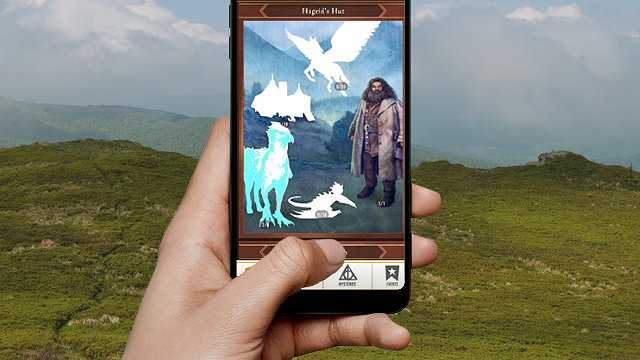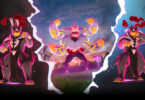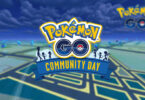Pokémon Go vs. Other AR Games: Which Reigns Supreme?
Augmented Reality (AR) gaming has grown tremendously in recent years, transforming how people interact with digital content and the real world. While many AR games have entered the market, Pokémon Go vs. Other AR Games, released in 2016, remains a defining benchmark for success. However, newer AR titles have introduced innovative gameplay mechanics, expanded storytelling, and unique immersive experiences. This article explores the landscape of AR games, comparing Pokémon Go with other prominent AR games, analyzing their strengths and weaknesses, and assessing which truly reigns supreme.
Understanding AR Gaming
Augmented Reality (AR) merges digital elements with the physical environment, allowing players to interact with virtual objects overlaid onto the real world through a device such as a smartphone or AR glasses. Unlike virtual reality (VR), which creates a fully immersive digital environment, AR enhances the real world rather than replacing it.
AR gaming taps into this technology to create engaging experiences that encourage exploration, social interaction, and real-world activity. The rise of smartphones with advanced sensors, GPS, and cameras has made AR accessible to millions of players worldwide.
Pokémon Go: A Cultural Phenomenon
When Pokémon Go launched in 2016, it became more than just a game; it was a global cultural phenomenon. Developed by Niantic in collaboration with Nintendo and The Pokémon Company, the game brought beloved Pokémon characters into the real world, blending nostalgia with modern technology.
Key Features of Pokémon Go
-
Catching Pokémon in Real Life: Players walk around their neighborhoods to discover and catch Pokémon appearing on their mobile screens.
-
PokéStops and Gyms: These real-world landmarks serve as interactive hubs where players can collect items, battle, and participate in raids.
-
Social Interaction: Pokémon Go encourages team play and community events, including raids, Pokémon Go Fest, and community days.
-
Regular Updates: Niantic continuously releases new Pokémon, seasonal events, and game features to keep players engaged.
Strengths of Pokémon Go
-
Mass Appeal: The game’s simple mechanics and nostalgic characters make it accessible to all ages.
-
Health and Fitness Benefits: The walking aspect of the game promotes physical activity.
-
Community Building: Players form local and global communities, fostering social interactions.
Weaknesses of Pokémon Go
-
Limited Gameplay Depth: While fun, some players feel the game can become repetitive over time.
-
Safety Concerns: The requirement to move in the real world can lead to accidents if players are not careful.
-
Device Dependency: Older smartphones may struggle with the game’s AR and GPS features.
Other Popular AR Games
While Pokémon Go set the stage for AR gaming, several other AR games have emerged, offering varied experiences and gameplay mechanics. Let’s examine some notable examples.
1. Harry Potter: Wizards Unite
Also developed by Niantic, Harry Potter: Wizards Unite sought to replicate the success of Pokémon Go using the Harry Potter universe. Players became wizards, casting spells, discovering magical creatures, and participating in wizarding events.
Strengths:
-
Engaging narrative for Harry Potter fans
-
AR spellcasting and interactive storytelling
-
Events and missions encouraging exploration
Weaknesses:
-
Lower mass appeal compared to Pokémon Go
-
Complex mechanics may intimidate casual players
-
Eventually discontinued due to declining player base
2. Ingress
Ingress, Niantic’s first AR title, is a science fiction-themed game where players capture portals at real-world locations. The game emphasizes strategy, team collaboration, and territory control.
Strengths:
-
Deep strategic gameplay
-
Long-term player engagement with a dedicated community
-
Provides a strong foundation for Pokémon Go
Weaknesses:
-
Steep learning curve for new players
-
Niche appeal limits mass adoption
-
Graphics and AR features less flashy compared to modern AR games
3. The Walking Dead: Our World
This AR shooter game transforms your city streets into a zombie apocalypse, allowing players to battle walkers, rescue survivors, and collect items.
Strengths:
-
Unique combat-focused gameplay
-
Immersive storytelling with licensed Walking Dead characters
-
Co-op gameplay encourages teamwork
Weaknesses:
-
Requires high battery and data usage
-
Less casual-friendly than Pokémon Go
-
Limited longevity without frequent content updates
4. Jurassic World Alive
In Jurassic World Alive, players collect dinosaurs, create hybrid species, and battle them against others. The game merges AR exploration with combat and strategy elements.
Strengths:
-
Dinosaur collection appeals to a broad audience
-
Hybrid creation system adds depth to gameplay
-
Regular updates and tournaments keep players invested
Weaknesses:
-
Combat-heavy focus may alienate casual players
-
Not as socially interactive as Pokémon Go
-
AR implementation sometimes feels secondary to battle mechanics
5. AR Dragon
AR Dragon allows players to hatch, raise, and interact with virtual dragons in their real-world environment. It focuses on nurturing rather than exploration.
Strengths:
-
Highly interactive and visually appealing
-
Appeals to players seeking a pet-simulation experience
-
Encourages creativity and care-taking
Weaknesses:
-
Limited outdoor exploration compared to Pokémon Go
-
Small player base
-
Gameplay depth can be shallow over time
Comparing Gameplay Mechanics
When comparing Pokémon Go to other AR games, several factors come into play:
Exploration and Movement
-
Pokémon Go thrives on real-world exploration, motivating players to walk, visit landmarks, and engage in community events.
-
Harry Potter: Wizards Unite and Ingress also encourage exploration but with more complex mechanics that may not appeal to casual players.
-
Games like AR Dragon and Pokémon Go vs. Other AR Games offer AR experiences that are less focused on exploration and more on in-place interaction.
Social Interaction
-
Pokémon Go’s gym battles, raids, and community events foster strong social connections.
-
Ingress has a dedicated but smaller community, often more competitive and strategy-focused.
-
The Walking Dead: Our World and Jurassic World Alive include co-op features but lack the massive social reach of Pokémon Go.
Longevity and Updates
-
Niantic has kept Pokémon Go fresh with regular Pokémon releases, seasonal events, and quality-of-life improvements.
-
Other AR games like Harry Potter: Wizards Unite struggled with retention and eventually shut down.
-
Games that focus heavily on combat or pets may see interest wane without consistent updates or social features.
Accessibility and Mass Appeal
-
Pokémon Go’s simple mechanics, nostalgic characters Pokémon Go vs. Other AR Games, and broad appeal make it accessible to almost anyone.
-
Games with complex mechanics, such as Ingress or Wizards Unite, cater more to dedicated fans.
-
AR Dragon and similar niche games attract specific audiences but rarely achieve mainstream success.
Read More: How Niantic Keeps Pokémon Go Fresh After Nearly a Decade
The Impact of AR Technology on Gameplay
AR technology plays a pivotal role in shaping how these games are experienced. Key technological factors include:
GPS Accuracy
-
Accurate location tracking is crucial for games like Pokémon Go and Ingress, where real-world positioning impacts gameplay.
AR Visuals
-
Pokémon Go uses AR sparingly, mainly for capturing Pokémon, making it accessible on a wider range of devices.
-
AR Dragon and The Walking Dead: Our World provide more immersive AR visuals, but these require more powerful hardware.
Device Compatibility
-
Pokémon Go vs. Other AR Games runs on most modern smartphones, making it highly accessible.
-
AR-heavy games like Jurassic World Alive demand higher-end devices, limiting audience reach.
Cultural and Social Influence
Pokémon Go’s impact goes beyond gameplay. It encouraged people to explore their cities, meet new people, and even participate in charitable events. Its influence is seen in:
-
Urban Exploration: Players discovered new parks, landmarks, and public spaces.
-
Community Building: Pokémon Go events fostered friendships, social clubs, and local meetups.
-
Public Awareness: The game raised awareness of AR technology’s potential in gaming and education.
Other AR games, while engaging, have not matched this level of societal impact. Many remain niche experiences with smaller communities.
Monetization and Business Models
Pokémon Go’s revenue model includes in-game purchases such as Poké Balls, incubators, and event passes. Its success proves that AR games can be both popular and profitable.
Other AR games adopt similar models:
-
The Walking Dead: Our World and Jurassic World Alive use in-app purchases for items, upgrades, or speed boosts.
-
AR Dragon monetizes through customization options and premium dragons.
-
Ingress relies on community support and merchandise rather than aggressive in-app sales.
Pokémon Go’s monetization strategy balances profitability without significantly disrupting the gameplay experience, contributing to its long-term success.
Challenges in AR Gaming
Despite advancements, AR games face challenges:
-
Player Safety: Walking or driving while playing poses risks.
-
Battery and Data Consumption: Pokémon Go vs. Other AR Games are resource-intensive, limiting playtime for some users.
-
Saturation and Retention: The AR market is crowded, and retaining player interest requires constant innovation.
-
Hardware Limitations: Older devices may struggle with performance-heavy AR games.
Pokémon Go addresses some of these challenges through features like Adventure Sync, which tracks distance walked even with the app closed, allowing players to progress safely.
Pokémon Go vs. Other AR Games: The Verdict
Evaluating the strengths and weaknesses of Pokémon Go alongside other AR titles reveals several conclusions:
Dominance in Accessibility and Appeal
Pokémon Go’s simplicity, nostalgic charm, and global reach make it unmatched in accessibility and appeal. While other games may offer deeper mechanics or richer storytelling, few have captured mass attention.
Innovation and Evolution
Games like Jurassic World Alive and The Walking Dead: Our World introduce new mechanics and AR interactions, but Pokémon Go’s constant evolution keeps it relevant and engaging years after its launch.
Social and Cultural Impact
Pokémon Go’s ability to foster community, encourage physical activity, and influence real-world behavior sets it apart from its competitors.
Longevity and Sustainability
The combination of regular updates, community events, and strategic monetization ensures Pokémon Go remains a sustainable AR experience. Many other AR games struggle to maintain long-term player engagement.
Conclusion
While the AR gaming landscape continues to grow, Pokémon Go remains the undisputed leader in the genre. Its simplicity, nostalgic appeal, social connectivity, and consistent updates create an experience that is both engaging and culturally significant. Other AR games contribute valuable innovations, such as deeper combat systems, immersive AR visuals, and niche simulations, but they often fall short in accessibility and mass appeal.
In the battle of Pokémon Go vs. other AR games, Pokémon Go reigns supreme—not merely for its gameplay, but for its ability to transform the way people interact with both technology and the real world. Its legacy proves that AR gaming is not just a fleeting trend, but a powerful medium capable of uniting communities, encouraging exploration, and redefining entertainment.
The future of AR gaming will likely see more innovations, but Pokémon Go has set a high bar that will influence every AR title for years to come.







